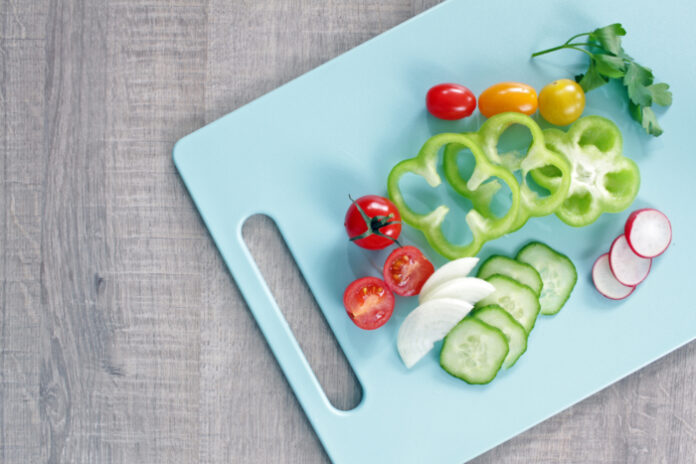Each of us at least once cooked something in the kitchen. Of course, not without the use of a cutting board. But, few people thought about how to properly care for this board. Today we will talk with the specialists of July Home about the care of plastic cutting boards. Read the recommendations and save for yourself!
Advantages
Using plastic cutting boards for food preparation has many advantages. For one, they are lightweight and easy to move around the kitchen, which is an especially useful trait if you have a smaller kitchen space. Moreover, plastic cutting boards are more affordable compared to other materials like wood and bamboo.
In terms of safety, plastic cutting boards are non-porous and dishwasher safe which minimizes the risk of harboring bacteria such as E. coli or Salmonella; this is especially important when preparing foods like chicken and fish that carry more germs than other items. Plastic surfaces can also be easily sanitized with bleach or vinegar solutions to help kill potential bacteria.
Plastic cutting boards are also much easier on your knife blades than wooden ones; meaning that you don’t need to sharpen your knives as often since there’s less wear and tear on them when used on plastic surfaces. This helps preserve the integrity of your knives over time and saves you money from having to purchase new ones frequently.
In addition, plastic cutting boards come in a variety of colors and sizes so it’s easy to find one that fits your needs perfectly; from large ones for chopping vegetables or carving meat to small ones for herbs or garlic cloves, there’s something for everyone. Furthermore, these surfaces can be labeled according to their designated use so as not to mix up raw meats with ready-to-eat vegetables; they can even be color coded so that different family members know exactly where they need to cut their foods without accidentally cross contaminating them!
Finally, unlike hardwood boards, plastic cutting boards require little maintenance beyond general cleaning after each use; they don’t need oiling like wooden ones do which makes them very convenient in terms of upkeep. All in all, plastic cutting boards offer an excellent balance between functionality and price point making them a great choice for any home chef!
Plastic cutting boards are an essential tool in the kitchen for food preparation. They provide a clean, non-porous surface for slicing vegetables, cutting meat, and other tasks. With proper care and cleaning, plastic cutting boards can last for many years. Here are some tips on how to keep your plastic cutting board looking like new:
Cleaning
After each use, rinse the board with hot water and soap to remove any food particles or residue that may be stuck on the surface. To sanitize it, you can spray it with a solution of one tablespoon of bleach per gallon of water. Allow it to sit for several minutes before wiping down with a damp cloth and rinsing it off with hot water. Let the board air dry after each use to reduce the risk of bacterial growth.
Sharpening
Over time, plastic cutting boards can become dull from regular wear and tear. To keep them sharpened, you can use a handheld knife sharpener or you could use a honing steel that’s specifically designed for this purpose. Be sure to sharpen both sides evenly for best results and remember not to press too hard as this could damage the blade or board.
Oiling
To keep your plastic cutting board from warping or cracking, you should periodically oil it with mineral oil or coconut oil in order to maintain its integrity over time. Put several drops of oil on one side of the board and spread it around using a soft cloth until all surfaces are covered in an even layer of oil. Wipe any excess oil off with another clean cloth before allowing it to completely dry before using again.
Storing
When storing your plastic cutting board make sure that it is completely dry first so that no moisture is left behind which could cause mildew growth or warping over time. Place them in a cupboard or drawer away from direct sunlight as this could cause discoloration and deterioration over time too. You should also make sure they are stored away from other kitchen tools such as knives so that there is no chance of scratching or nicking them accidentally when closing drawers or cabinets.
By following these simple tips you can ensure that your plastic cutting boards stay in perfect condition for many years to come!
Find a Home-Based Business to Start-Up >>> Hundreds of Business Listings.

















































